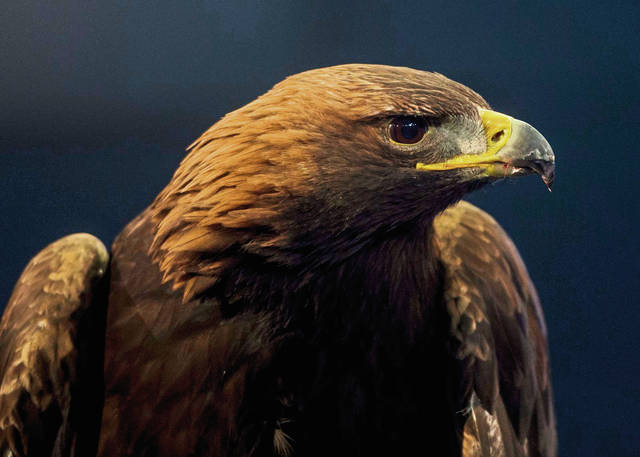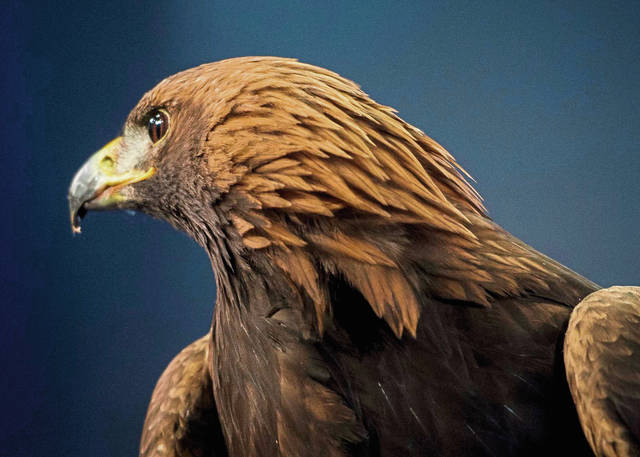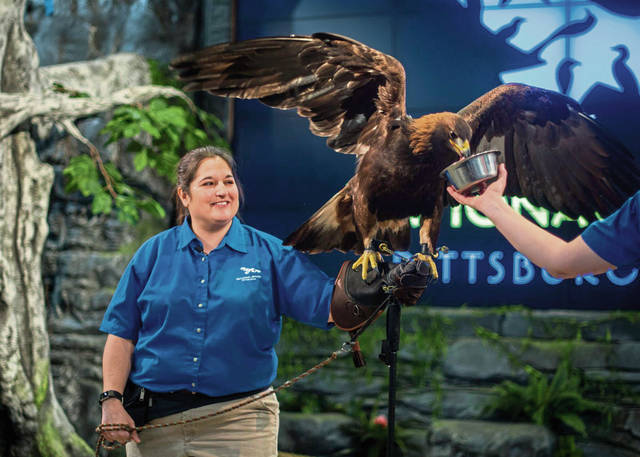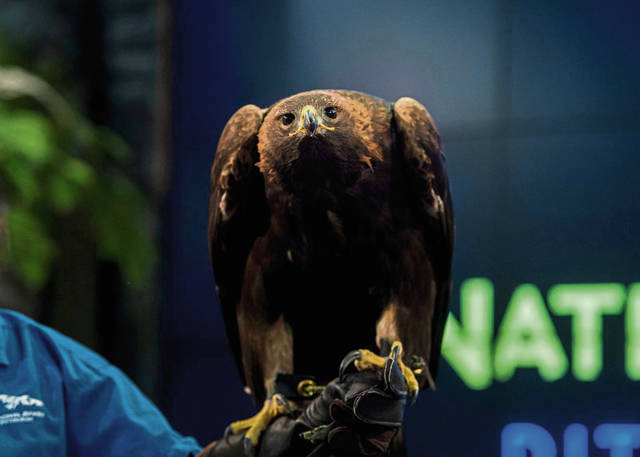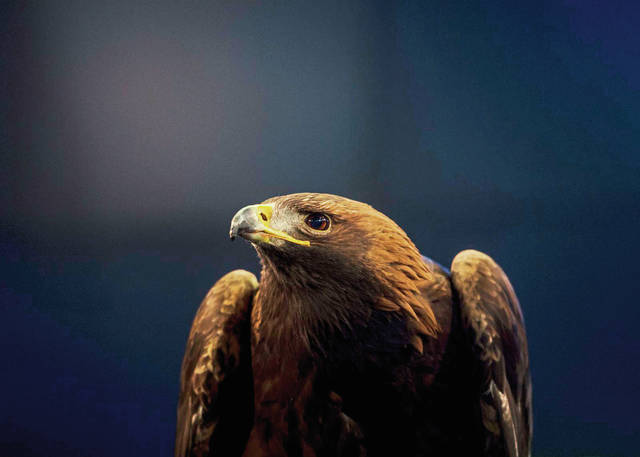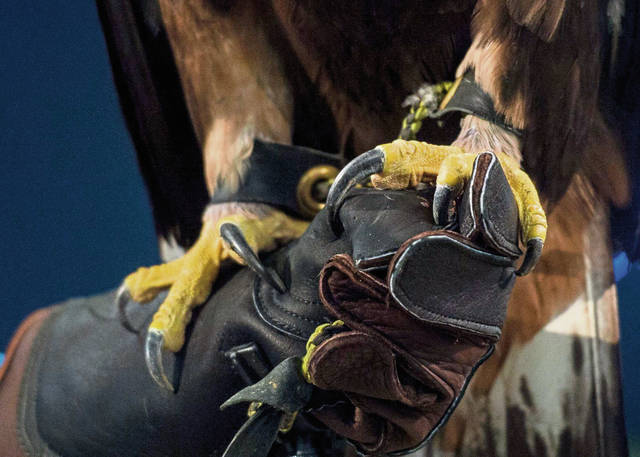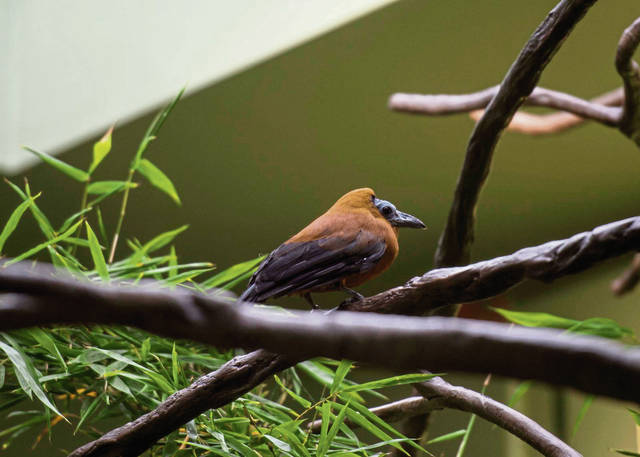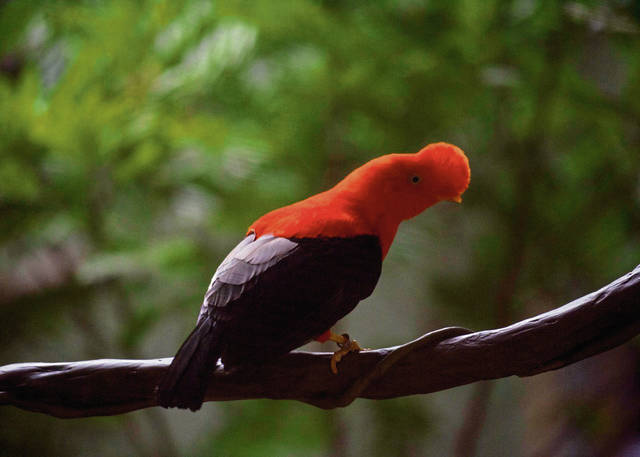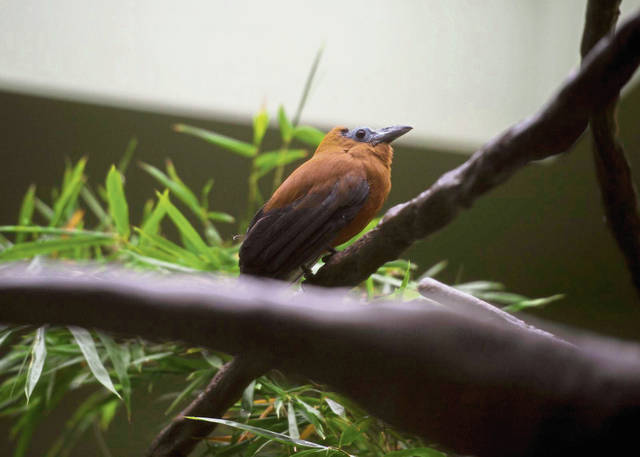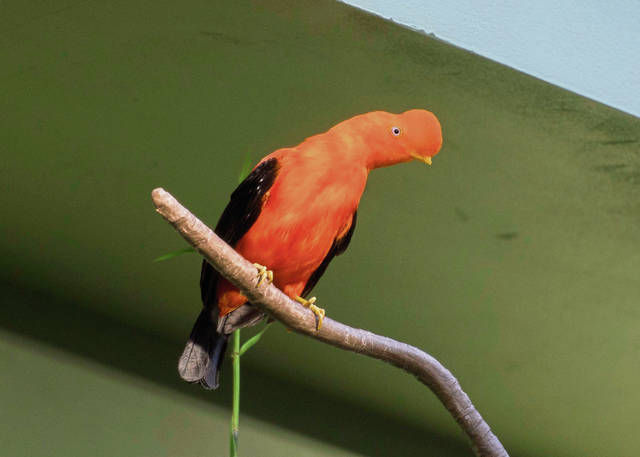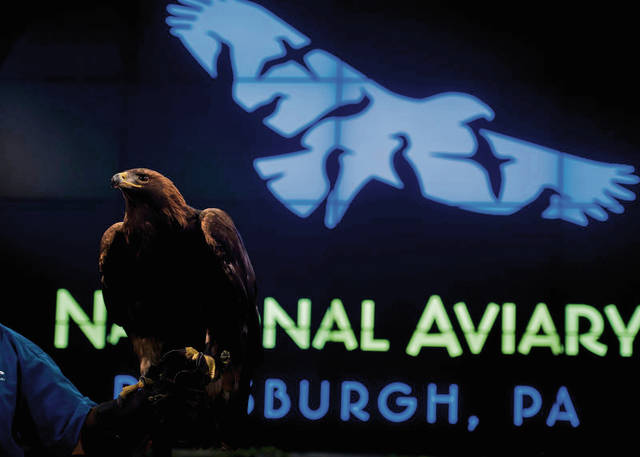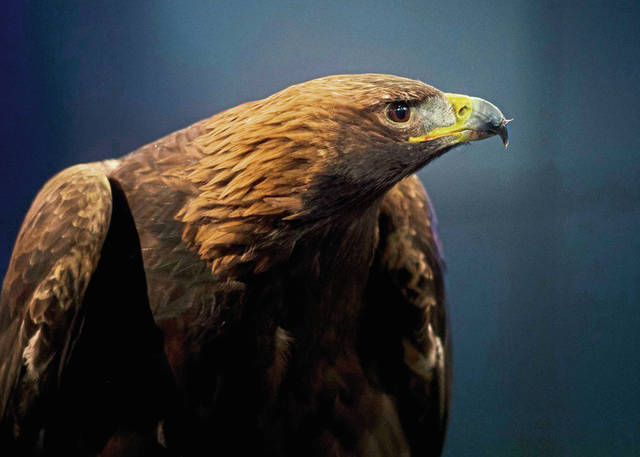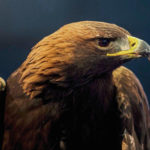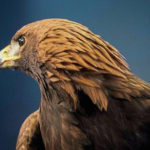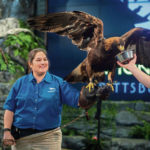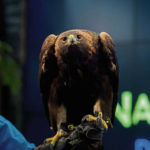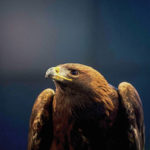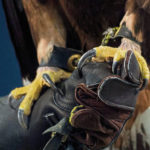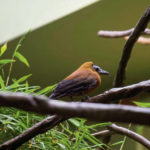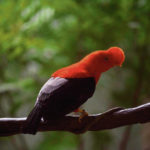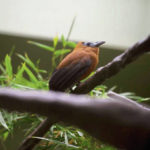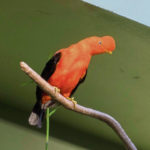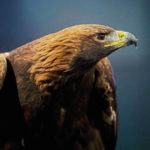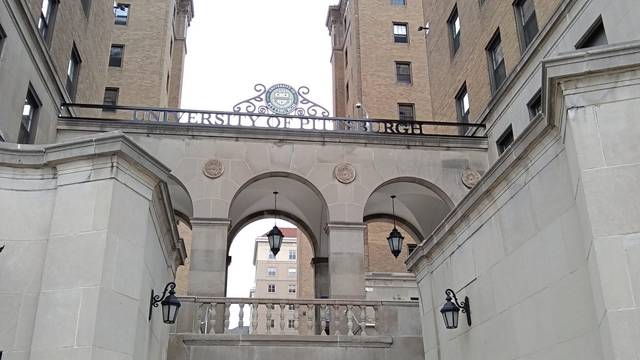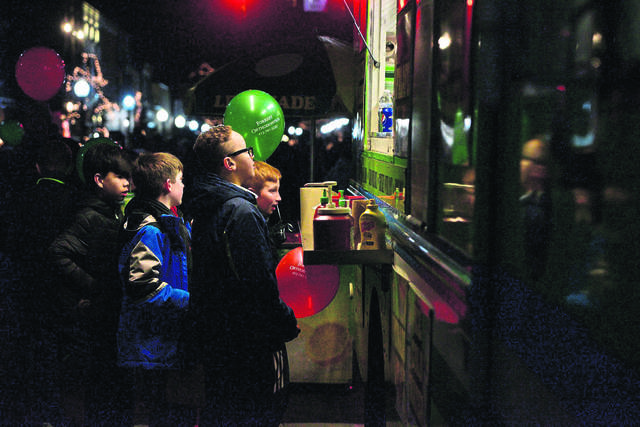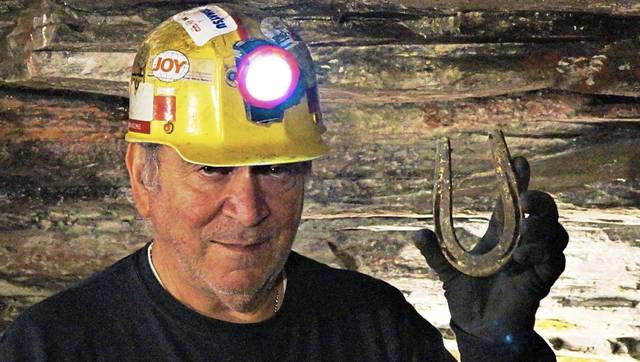The eagle has landed, as well as the Andean cock-of-the-rock and the Capuchinbird, at the National Aviary in Pittsburgh’s North Side.
The golden mantle of the golden eagle is as majestic as it is unmistakable, and easily differentiated from its brethren the bald eagle when viewed up close.
The Aviary now offers that rare opportunity for a close encounter with its new golden eagle, Autumn, a 4-year-old who was rescued after an injury in Massachusetts. Damage to its wings prevents the bird from flying long distances, a necessity for an apex predator to hunt.
Aviary trainer Cathy Schlott said it took a year of working with Autumn to get the wild bird to feel comfortable with people. During a demonstration Thursday, Schlott donned a large glove to support the raptor weighing eight to nine pounds on her wrist and forearm.
“She is confident and calm on the glove,” Schlott said.
“She is very inquisitive as well,” she said as the bird craned her head and eagle-eyed photographers clicking photos of her during the demonstration.
That wasn’t always the case.
Autumn was afraid of human interaction when she came to the Aviary, according to Schlott.
But Schlott said she sat with the bird while Autumn ate, helping to create new and pleasant associations with people for the bird.
For Schlott, breakthroughs with Autumn came when the bird would come to her and willingly hop onto her hand and wrist.
The public will be able to see presentations on Autumn and the Aviary’s bald eagles at 11:30 a.m. daily.
The Aviary’s other new residents include two species from the mountaintops of the Andes. It took more than a decade of planning and preparation to bring them to Pittsburgh.
“They are incredible species,” said Dr. Pilar Fish, director of veterinary medicine.
“It’s not just their beauty and behaviors but their specific habitat — the humid tops of the Andean mountains — as an example of the importance of conservation,” Fish said.
The Andean cock-of-the-rock, a male, is a brilliant orange-red, crow-sized bird with an unusual, fan-shaped head. It romped with his new drab-colored mate Thursday. Aviary officials are hoping love will be in the air for the couple this summer, as they designed an Andean environment with a large artificial tree that has vines for easy hopping and spaces for nesting.
The tree and vines stretching through the room were specially made in Indiana out of Styrofoam and fiberglass, according to Kurt Hundgen, director of animal collections.
The tree does something real ones don’t: It sprays a fine mist of water periodically, creating conditions that mimic the Andes.
The cock-of-the-rocks share their spacious mountain habitat with two Capuchinbirds. The latter birds are rust-colored with blue-grey heads that the Aviary says resemble the hooded cloaks of Capuchin monks.
Both species perform elaborate courtship rituals that officials hope the public will get to see.
The Andean Mountain Habitat, made possible by Dollar Bank and other donors, is open to the public and includes talks about the new birds at noon daily.
Mary Ann Thomas is a Tribune-Review staff writer. You can contact Mary Ann at 724-226-4691, mthomas@tribweb.com or via Twitter @MaThomas_Trib.


